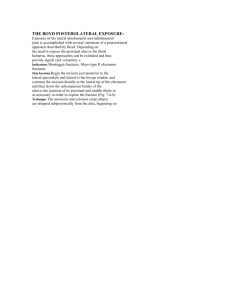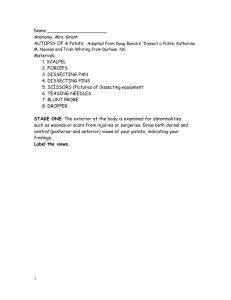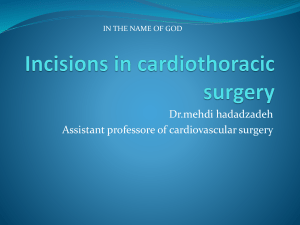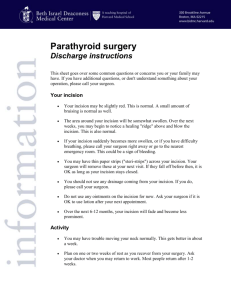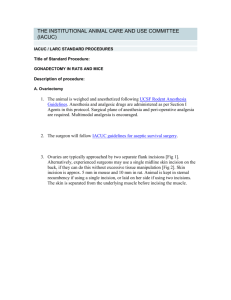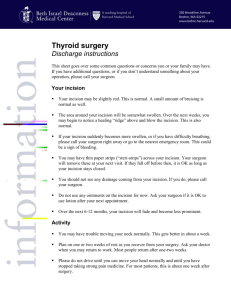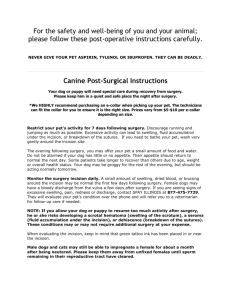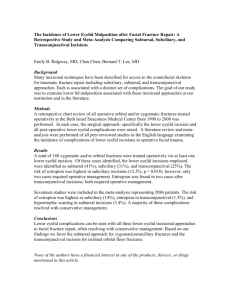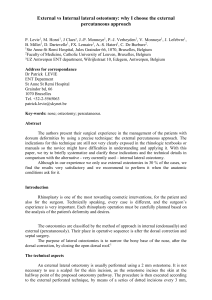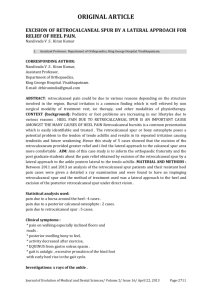Clinical Experience of the Modified Transconjunctival Lower Lid
advertisement
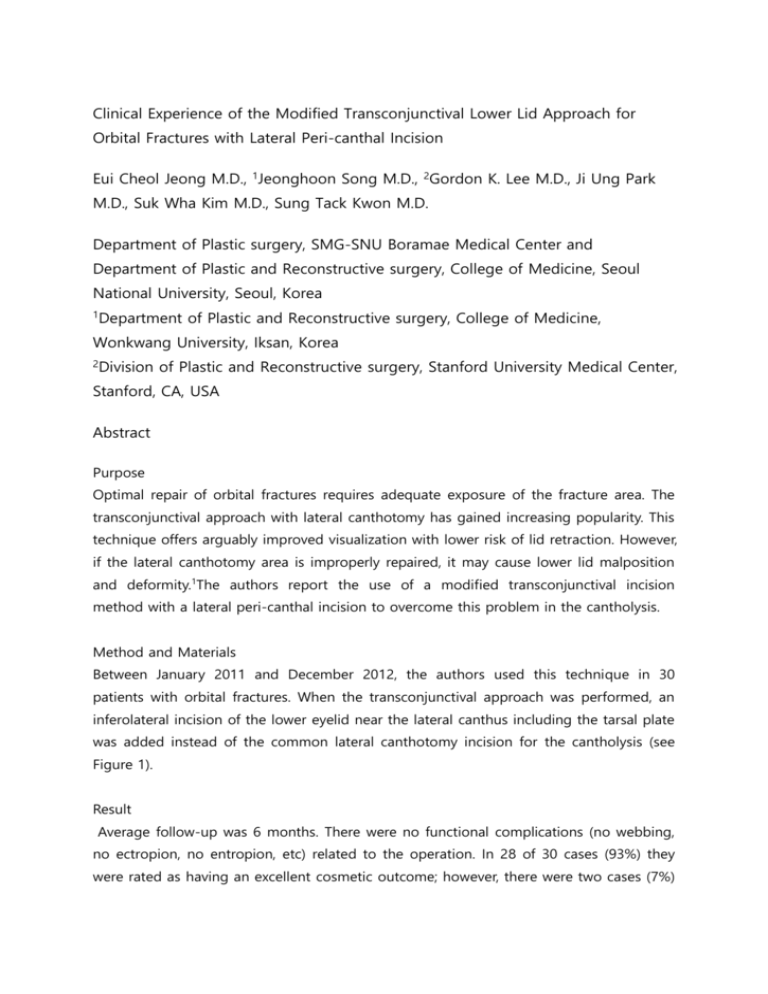
Clinical Experience of the Modified Transconjunctival Lower Lid Approach for Orbital Fractures with Lateral Peri-canthal Incision Eui Cheol Jeong M.D., 1Jeonghoon Song M.D., 2Gordon K. Lee M.D., Ji Ung Park M.D., Suk Wha Kim M.D., Sung Tack Kwon M.D. Department of Plastic surgery, SMG-SNU Boramae Medical Center and Department of Plastic and Reconstructive surgery, College of Medicine, Seoul National University, Seoul, Korea 1Department of Plastic and Reconstructive surgery, College of Medicine, Wonkwang University, Iksan, Korea 2Division of Plastic and Reconstructive surgery, Stanford University Medical Center, Stanford, CA, USA Abstract Purpose Optimal repair of orbital fractures requires adequate exposure of the fracture area. The transconjunctival approach with lateral canthotomy has gained increasing popularity. This technique offers arguably improved visualization with lower risk of lid retraction. However, if the lateral canthotomy area is improperly repaired, it may cause lower lid malposition and deformity.1The authors report the use of a modified transconjunctival incision method with a lateral peri-canthal incision to overcome this problem in the cantholysis. Method and Materials Between January 2011 and December 2012, the authors used this technique in 30 patients with orbital fractures. When the transconjunctival approach was performed, an inferolateral incision of the lower eyelid near the lateral canthus including the tarsal plate was added instead of the common lateral canthotomy incision for the cantholysis (see Figure 1). Result Average follow-up was 6 months. There were no functional complications (no webbing, no ectropion, no entropion, etc) related to the operation. In 28 of 30 cases (93%) they were rated as having an excellent cosmetic outcome; however, there were two cases (7%) with complications. One patient had a subcutaneous preseptal hematoma, which required reoperation to obtain hemostasis. In another patient, there was a notch deformity on the lower eyelid margin, but the patient was satisfied and did not choose to have it revised. Conclusions The authors believe that for orbital fracture repair the modified transconjunctival incision with lateral peri-canthal incision can be easily performed and reliably repaired as opposed to the more traditional lateral canthotomy technique. We believe that there is more anatomical reliability in repairing the tarsal plate rather than the attachment of the lateral canthus. Furthermore, in our experience this modified technique provided more than adequate exposure for fracture repair, with excellent cosmetic and functional result on long-term follow-up. Figure 1. Transconjunctival incision with lateral peri-canthal incision Reference 1. Ridgway EB, Chen C, Lee BT. Acquired entropion associated with the transconjunctival incision for facial fracture management. J Craniofac Surg. 2009 Sep;20(5):1412-5. Disclosure None of the authors has a financial interest in any of the products, devices, or drugs mentioned in this manuscript

